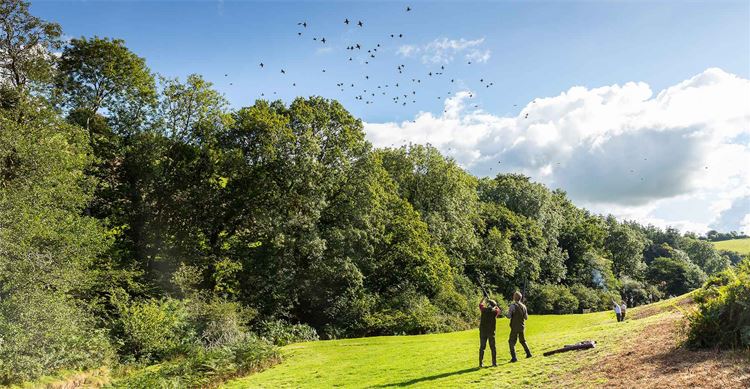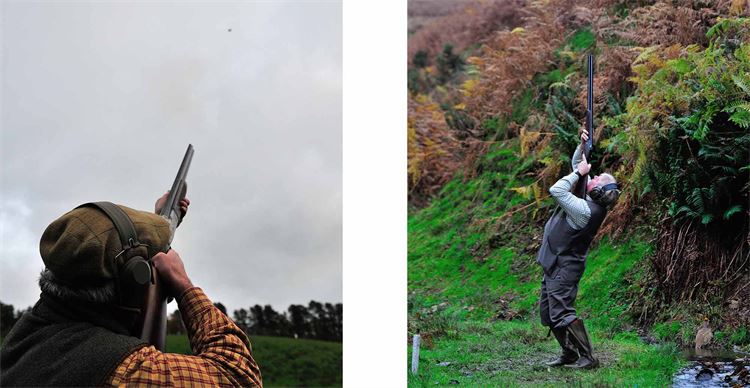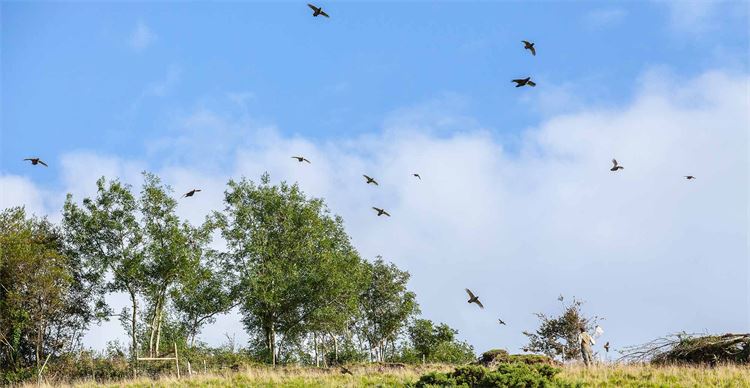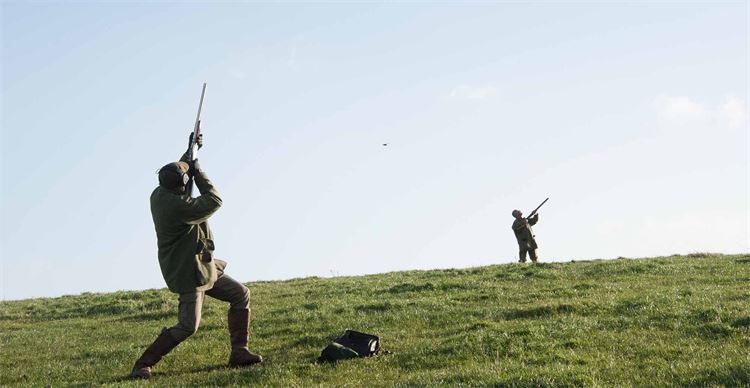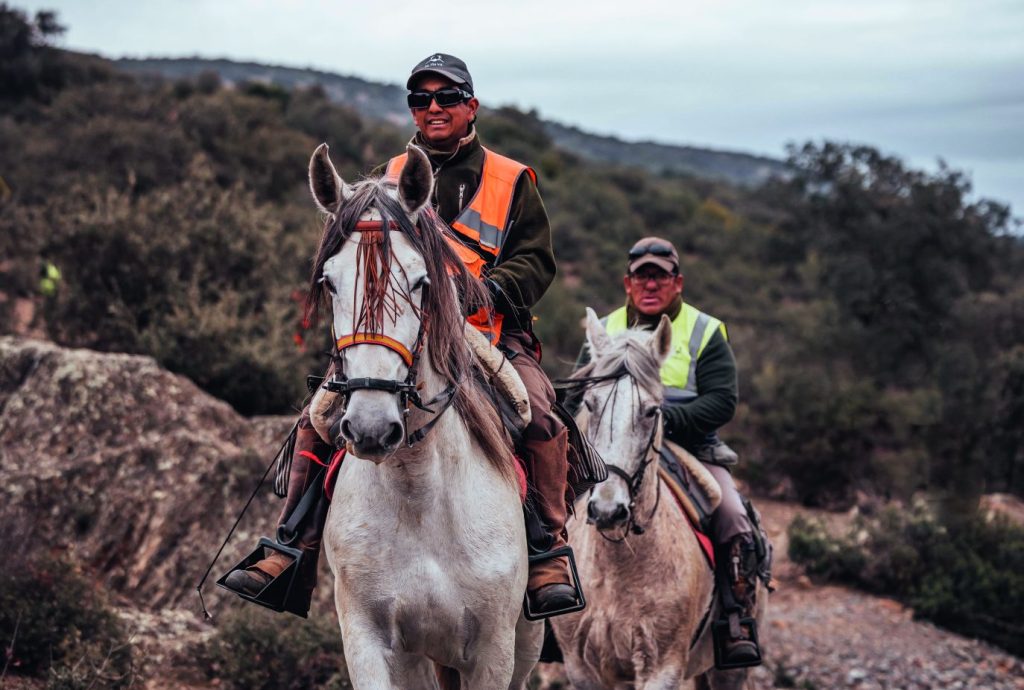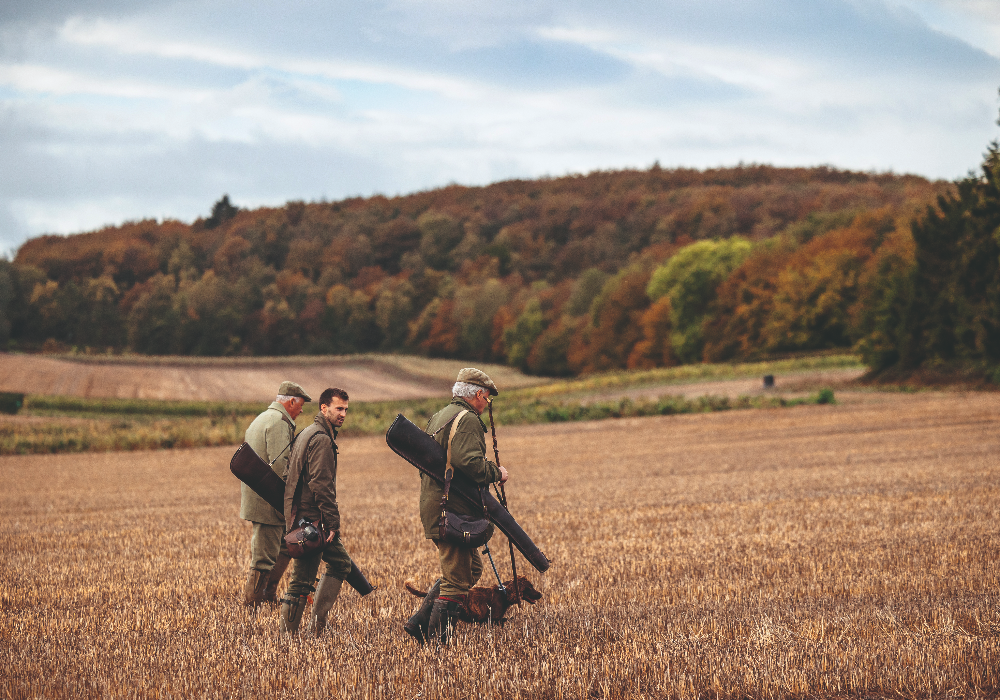The ten most common game shooting faults
As a professional game shooting instructor and vastly experienced game Shot, Simon Ward has seen every conceivable game shooting fault in the book. But over the years, he has identified 10 that seem to crop up more often than others.
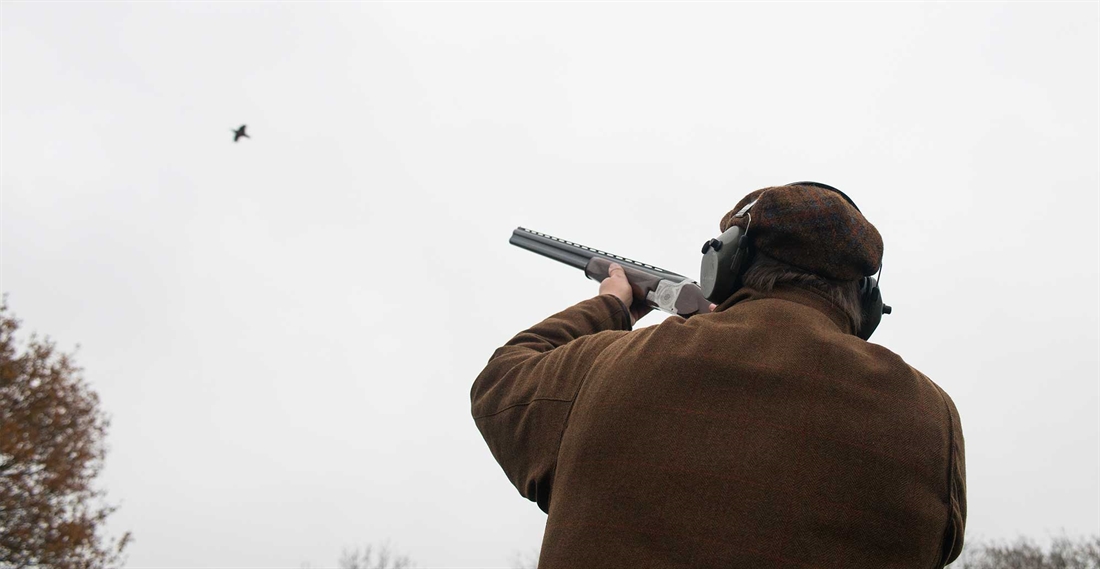
1. Bird selection
The fault: Something I see a lot, particularly with less experienced Guns, is poor bird selection – i.e. picking the first bird that comes into sight and then sticking with it, so that by the time it is in-range, it is often over a neighbouring peg or out of range. As a consequence, when you take the shot, your feet are in the wrong place and you end up in an unnatural, contorted position, resulting in a miss, more often than not behind or off-line.
The fix: The key is to slow down and take your time in selecting your bird; don’t panic and automatically lock onto the first one you see. Think about where the birds are likely to come from and where they are likely to be heading, before the drive gets underway. Use your fieldcraft to assess their height and line, taking the topography, wind speed and wind direction into consideration.
It’s all about preparation, so don’t leave things to chance. And to pick the right bird, you must remain calm and be disciplined, otherwise you will end up loosing-off two barrels at something that is out of range.
2. Not moving your feet
The fault: Not moving your feet into position before addressing the bird is probably the game shooting mistake I see most often. If you don’t move your feet into the correct position for where you plan to kill the bird (NOT where the bird is when you mount the gun), the movement of the gun will be greatly restricted, resulting in a miss behind or underneath and behind.
The fix: Simple: once you have selected your bird, move your feet into the correct position as soon as possible, before mounting the gun. In all game shooting, footwork and timing is key.
3. Mounting too far behind the bird
The fault: In my experience a lot of people start their swing too far behind the bird, so the first part of their swing is wasted by playing catch-up. This is pointless. Once they do finally catch the bird up and then dial in the required lead, they end up taking the shot at the very end of their swing when there is no gun-speed left. And then they say: “I can’t possibly be missing behind.” But they are, because their gun had stopped by the time they finally pulled the trigger.
The fix: I teach people to mount onto the bird’s tail, and to then pull ahead of the bird and take the shot as soon as the sight picture looks right, finishing with the all-important follow-through.
4. Stopping the gun
The fault: Stopping the gun as soon as you take the shot is another very common mistake which invariably results in a miss behind. This is often caused by thinking about your next bird before you have successfully killed the bird you are focussed on and seen it start to fall. As a result, you will check your swing and have to restart the whole process before being able to take your second shot.
The fix: It is crucial that you keep the gun moving after you have pulled the trigger, and the simplest way to achieve this is to always plan to take a second shot; i.e. keep your cheek on the stock and keep your gun moving until you actually see the bird start to fall.
5. Lifting your head off the stock
The fault: This is another very common mistake, particularly with straight, overhead birds. When you lift your head, you end up looking down the side of the breech, which changes your perspective. For example, if a right-handed Gun lifts his or her head off the stock on a straight driven bird, they are likely to pull to the left-hand-side because they will be looking diagonally across the barrels at the bird. Vice versa for a left-handed Shot.
Lifting your head on a right-to-left crosser will build in extra lead and you are likely to miss high and in front. Vice versa for a left-to-right bird – you will think you have the correct lead, but this is an optical illusion as you are looking across the barrels at the bird and you are likely to miss behind.
The fix: The solution to this problem is the same as that for fault number four. Always plan to take a second shot (i.e. use your second barrel) and concentrate on keeping your cheek on the stock until you actually see the bird start to fall.
6. Not unmounting between birds
The fault: I often see Guns moving from one bird to another between shots without unmounting the gun, often killing the first bird, but never the second. This is the result of a rushed, snatched second shot when one’s feet are in the wrong position.
The fix: Once you have killed a bird in a flush of pheasants or partridges with your first barrel, you must always unmount between shots. Slow down, reassess what is in front of you, move your feet accordingly and then remount the gun onto the new bird. The key is to be disciplined and remain calm.
7. Rushing
The fault: This is something I see a lot, particularly during busy drives when there are lots of birds in the air at once. The Gun gets flustered and over-excited by the number of birds in the air and ends up snatching at a bird in haste. More often than not, this will result in a miss.
The fix: As with all game shooting stuations, discipline is key. Concentrate on remaining relaxed and calm, and assess what’s in front of you with a clear mind before each shot. And make a point of deciding which bird you are going to shoot before you mount your gun. And don’t forget to enjoy and appreciate each bird.
8. Mistiming your mount
The fault: Mounting the gun too early and tracking a bird for too long before taking the shot is a fairly common mistake, particularly on open drives where you see the birds coming from a long way off. It can often result in the shot being taken in an awkward position. And for some reason, Guns who mount onto a bird too early often end up shooting too late. Conversely, mounting the gun too late and taking the first shot when the bird is directly overhead is also a recipe for failure.
The fix: Before the drive gets underway, decide where your kill window is (i.e. the area in the sky where you plan to shoot the bird). Then, while you are waiting for a bird to reach your kill window, rather than mounting your gun and tracking it with the muzzles, you should be thinking about your footwork and body position. Rest assured everything will go pear-shaped if your feet aren’t in the right position before you mount your gun.
It is human nature to think that a bird will be at its easiest when it is at its nearest point (i.e. directly overhead). This isn’t necessarily the case. Rather, you should plan to shoot pheasants and partridges fractionally forward of the line (between 10 and 11 o’clock), so that they effectively fly into the shot. If you get your timing right, you will always kill the bird when its vitals are vulnerable to your shot-string.
9. Rainbowing
The fault: If you do not get your footwork and body position right on high crossing pheasants and partridges, you will invariably end up in an awkward position which forces you to rotate from the hips (rainbow), resulting in a miss behind, underneath or both.
The fix: Move your feet into position before you mount your gun, and drop the opposite shoulder (i.e. left shoulder for a left to right crosser) to ensure that you stay on the right line.
For the right-handed Shot, if the bird is crossing over your left shoulder, once you have slightly more weight on your left foot (60/40), you then need to drop your right shoulder so that your shoulders are parallel to the angle of the bird’s line of flight. Once you have adjusted the angle of your shoulder, you can then mount onto the bird and pull ahead of it. On the other hand, if you move your feet into position for a high crossing shot to the left but forget to drop your right shoulder to the right angle, you will end up keeping the gun moving but you will be underneath the line of the bird. Dropping your shoulder can feel awkward to start off with, but it takes out some of the variables. For a right-hand crosser (over the right shoulder), you must drop the left shoulder to the angle of the bird. If you don’t, you will again end up rainbowing underneath the bird.
10. Over-thinking
The fault: It is easy to get oneself into a fluster when things aren’t going as well you would like, particularly if you are not sure what it is that you are doing wrong. This is a vicious circle as your shooting is likely to get worse as you get more wound-up and stressed!
The fix: Once you have taken the variables out of the equation (gunfit, eye dominance, gunmount, technique and ammunition), which should be addressed as much as possible before you get to your peg (i.e. at a shooting school or clay ground), you must learn to trust your instincts and enjoy your shooting.
Related Articles
Get the latest news delivered direct to your door
Subscribe to Fieldsports Journal
Elevate your experience in the field with a subscription to Fieldsports Journal, the premium publication for passionate country sports enthusiasts. This bi-monthly journal delivers unparalleled coverage of game shooting, fishing and big game across the UK and beyond.
Each issue offers a stunning collection of in-depth features, expert opinions and world-class photography, all presented in a timeless yet contemporary design.
Save 10% on shop price when you subscribe, with a choice of packages that work for you. Choose from Print & Digital or Digital only with each journal delivered directly to your door or via the app every other month, plus access to past issues with the digital back issue library.






